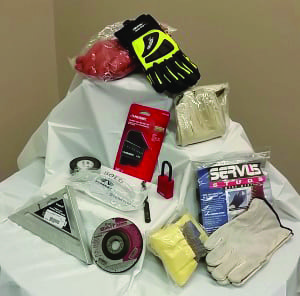Personal Protective Equipment Vending Simplifies Employee Safety
By many indicators, working in the power sector today is safer than it’s ever been. In 2014, the U.S. Occupational Safety and Health Administration (OSHA) found that utilities had a lower fatal work injury rate per 100,000 full-time workers than any other industrial sector.
While thorough training and increased communication initiatives serve as key elements of safety programs, many of the risks inherent to this line of work have also led many organizations to make personal protective equipment (PPE) an essential requirement.
Outdated Safety Measures
But even with a set of written industry standards from OSHA in effect, workers can still lose a piece of safety equipment or damage an essential item over time. Failure to provide and maintain adequate PPE not only presents physical risk to employees, but also could carry serious legal and financial implications for employers.
Sometimes, the biggest hurdle for a workplace is manually monitoring, issuing, and managing the distribution of PPE—a problem magnified by varying PPE requirements across job functions and total employees (Figure 1). And tracking PPE compliance can be difficult, time-consuming, wasteful, and costly.
A Simplified Distribution Process
In 1993, Union Pacific Railroad approached Indianapolis-based IVM Inc., which was, at the time, a traditional vending-machine management company, to build a custom PPE vending solution. It wanted a system that could dispense items, such as gloves and earplugs, and track employee supply usage.
IVM’s PPE vending solutions have since been deployed across a variety of manufacturing and industrial settings—from nuclear plants, to utility plants, to construction sites. In addition to vending machines, IVM also manufactures lockers and other “smart” supply vending solutions.
Duke Energy, one of the largest energy holding companies in the U.S., has long subscribed to IVM’s solutions (Figure 2) to more easily issue PPE, ensure safety compliance, and meet OHSA standards. In addition, IVM has partnerships with the D.C. Cook Nuclear Plant and PSEG Nuclear, and the company collaborates with organizations across a range of industries to help them achieve their safety goals.
Approved users simply walk up to a customized IVM vending machine or locker, swipe their badge, and select the supplies they need. This eliminates most administrative steps, while stock is reported and maintained in real-time—and more efficiently than ordering supplies on a whim would be. Real-time reporting enables more precise employee-supply budget forecasting.
Time Savings and Cost Reductions
When it comes to PPE equipment, ordering supplies is a time-intensive task. A survey of research conducted by Grainger found that an average of five people are involved in the purchasing of company supplies. Each purchase consists of 42 steps with an average of six handoffs and approvals. A single purchase order, it was shown, can take an average of 90 minutes to complete.
Through automated recordkeeping, average IVM customers see their employee supply costs drop by an average of 35%. Additionally, many organizations within the power and industrial sectors have seen employee supply consumption decrease 40% to 50%, thanks to more implied oversight about who requests what equipment.
By automating the process of supply ordering and inventory management, high-value employees are freed up for the work that matters most. Legal risks are also mitigated by IVM machines, because the machines automatically document the distribution of safety equipment to employees.
While not as exciting as summoning a candy bar, empowering workers to remain safe on the jobsite through automated supply vending can be a win-win for power sector employers and employees alike. ■
—Mike Pitts is president of IVM Inc.

